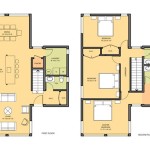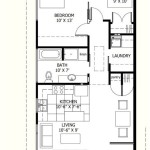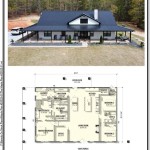How To Read Home Plans
Reading home plans is an essential skill for anyone considering building or remodeling a home. By understanding the basics of how to read home plans, you can gain valuable insights into the design, layout, and construction of your future home.
Home plans are typically drawn to scale, meaning that the measurements on the plans represent the actual dimensions of the home. The scale of the plans will be indicated on the title block, which is usually located in the lower right-hand corner of the plans. Common scales for home plans include 1/4 inch = 1 foot, 1/2 inch = 1 foot, and 1 inch = 1 foot.
The title block will also include other important information, such as the name of the project, the address of the property, and the date the plans were created. This information can be helpful for referencing the plans later on.
The floor plan is the most important part of the home plans. It shows the layout of the rooms on each floor of the home, as well as the location of windows, doors, and other features. The floor plan will also include dimensions for each room, so you can get a sense of the size and shape of the space.
In addition to the floor plan, home plans will also include elevations, which show the exterior of the home from different sides. Elevations can be helpful for visualizing the overall appearance of the home, as well as for understanding how the different parts of the home fit together.
Other common components of home plans include sections, which show the interior of the home from different angles, and details, which provide more specific information about specific features of the home, such as the kitchen or bathroom.
If you're not familiar with reading home plans, it's a good idea to ask your builder or architect for help. They can explain the plans to you and answer any questions you have.
Tips for Reading Home Plans
Here are a few tips for reading home plans:
- Start by looking at the title block to get an overview of the project.
- Study the floor plan to get a sense of the layout of the home.
- Use the elevations to visualize the exterior of the home.
- Refer to the sections and details for more specific information about the home.
- Don't be afraid to ask your builder or architect for help.
By following these tips, you can learn to read home plans and gain valuable insights into the design, layout, and construction of your future home.

How To Properly Read Floor Plans And What Details Look For

How To Read A Floor Plan With Dimensions Houseplans Blog Com

How To Read A Floor Plan

Do You Know How To Read Floor Plans

House Floor Plans Do You Know How To Read Them

Home Plan Buyers Learn How To Read A Floor Blueprint Blog Eplans Com

Home Plan Buyers Learn How To Read A Floor Blueprint Blog Eplans Com

Home Plan Buyers Learn How To Read A Floor Blueprint Blog Eplans Com

How To Read A Transportable Home Plan Ezyline Homes

How To Read A Floor Plan Hensley Custom Building Group








